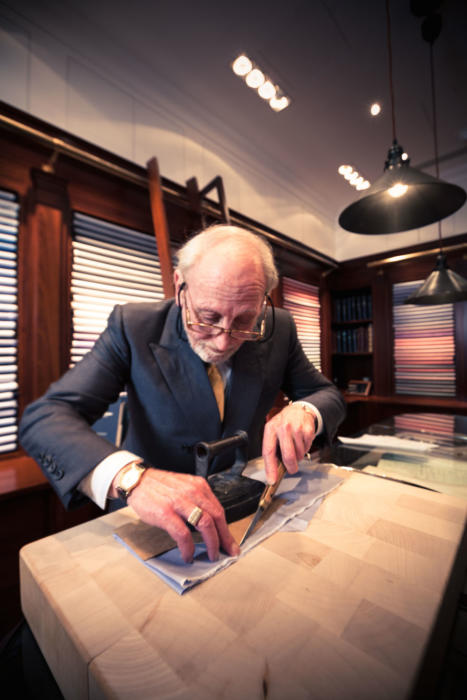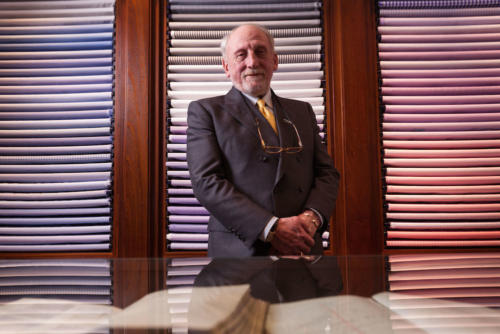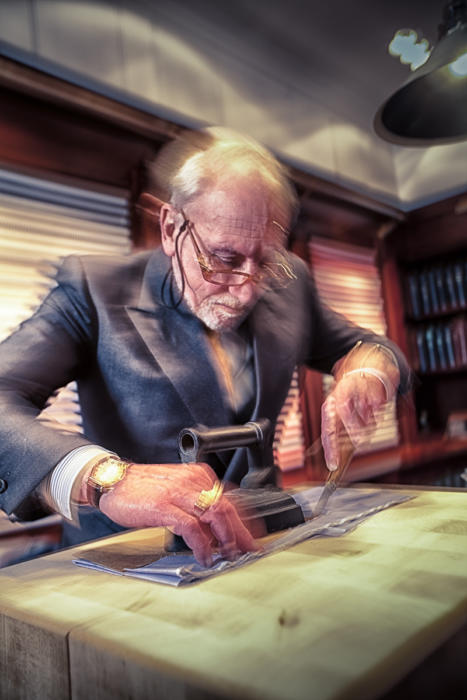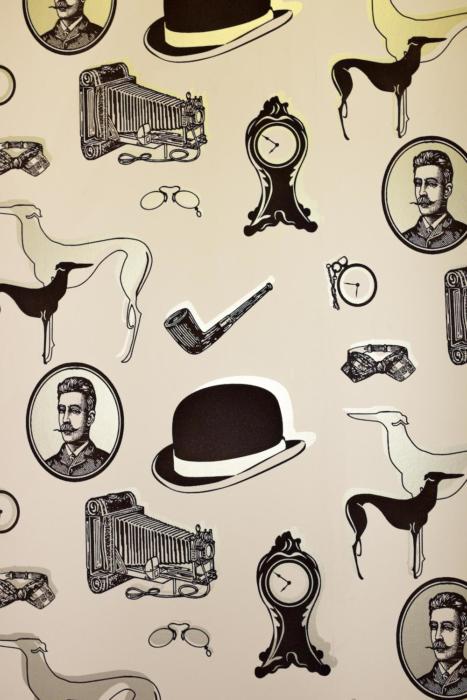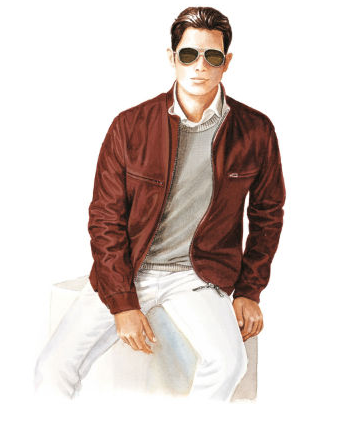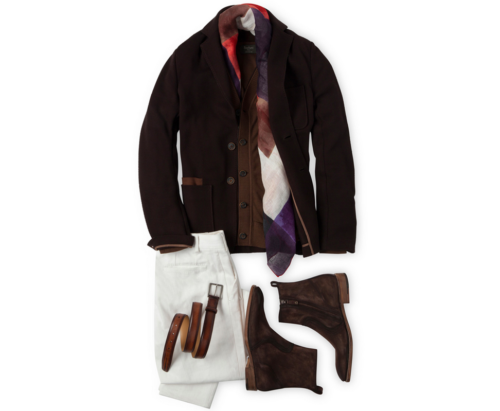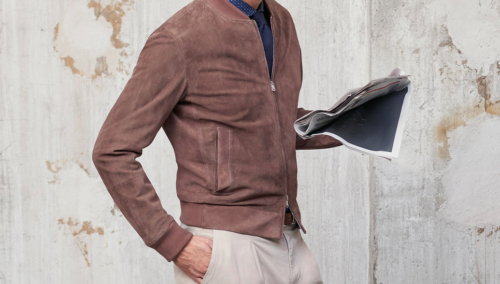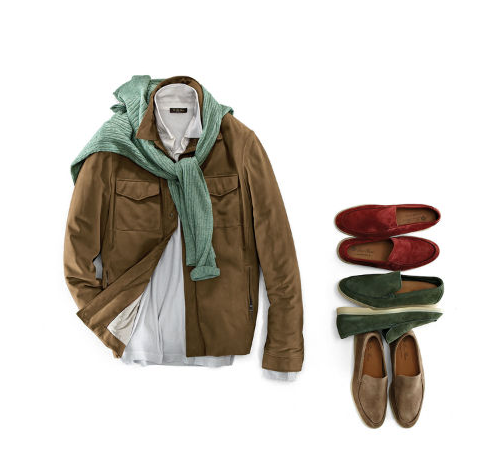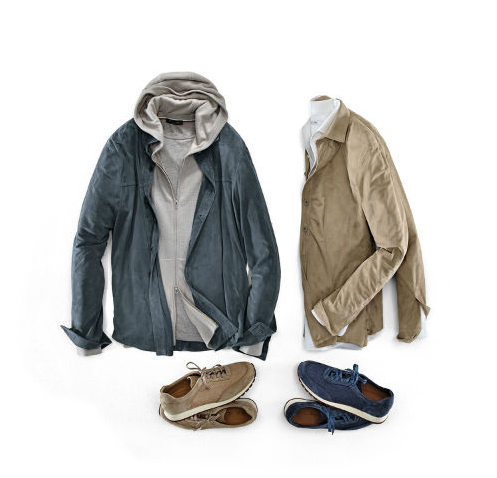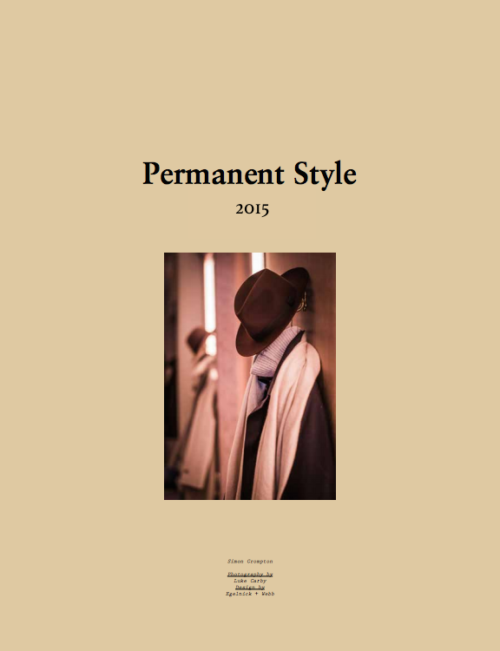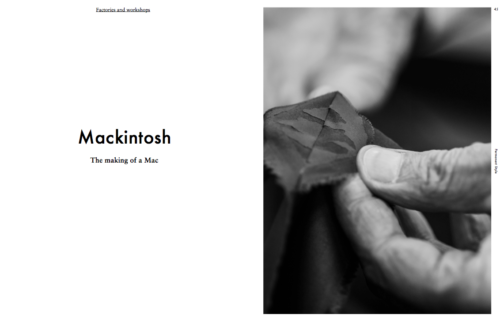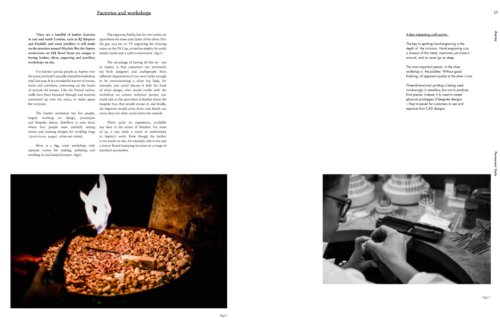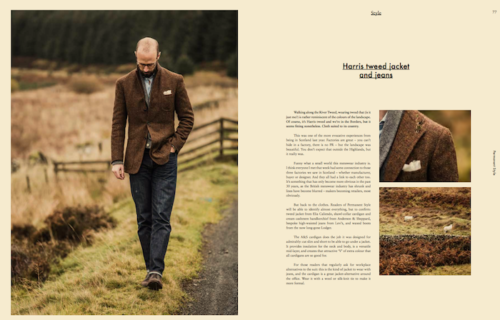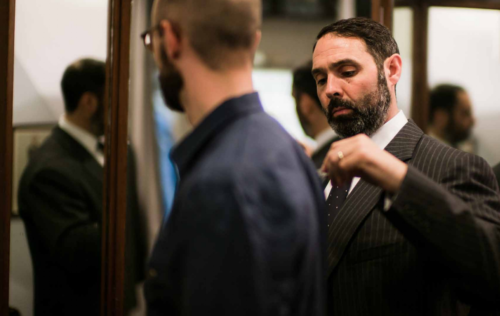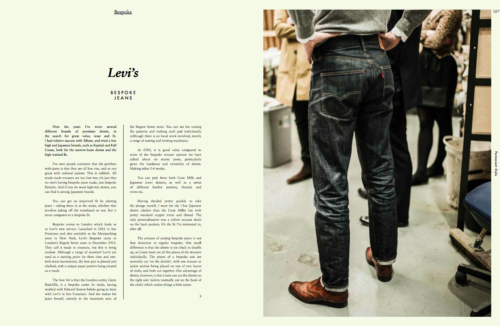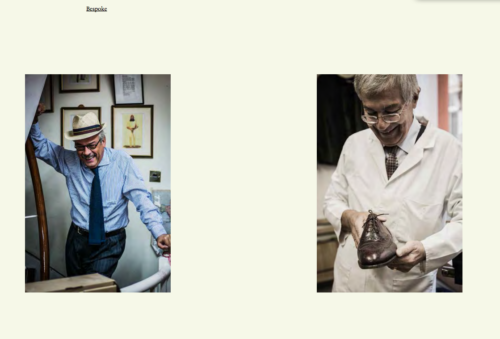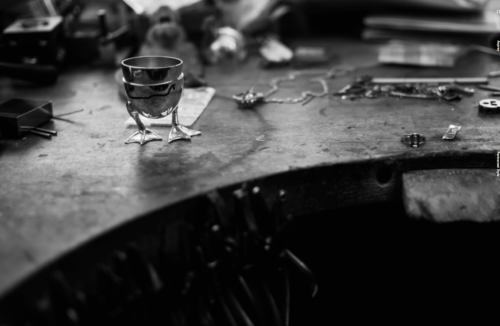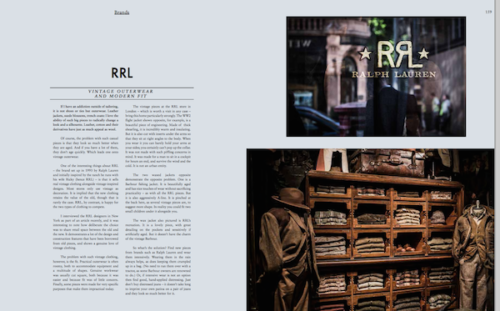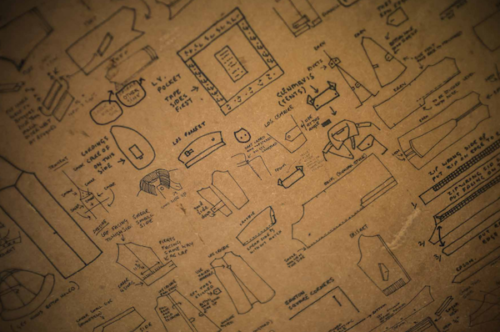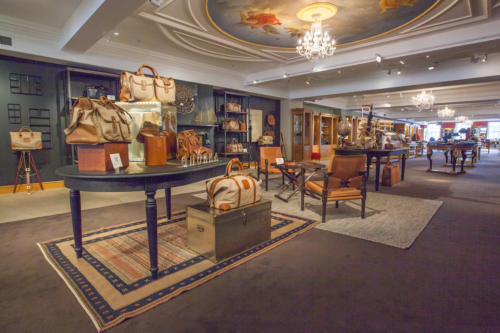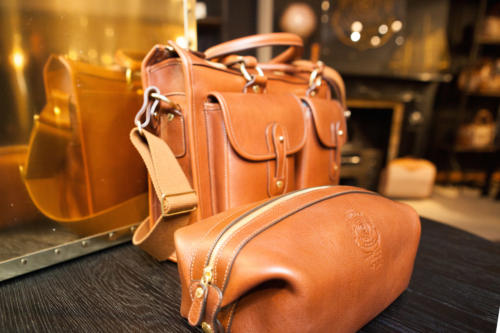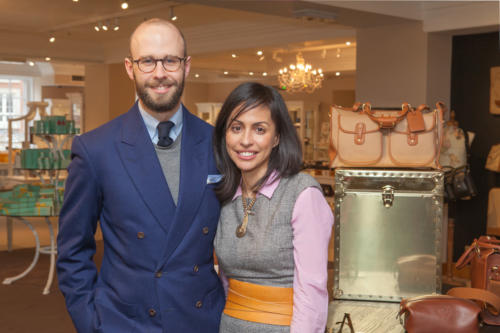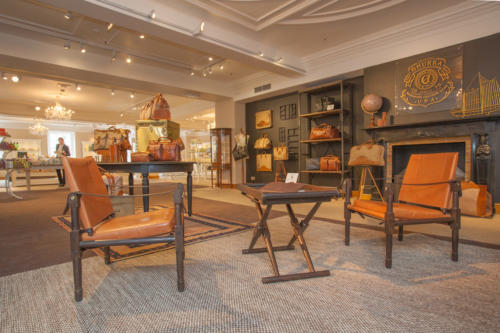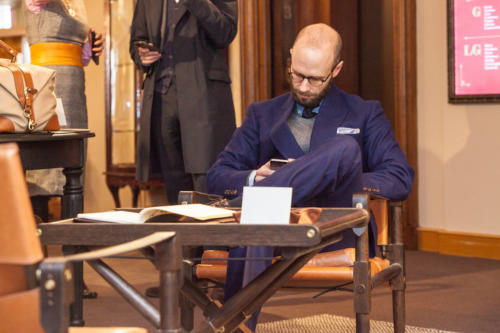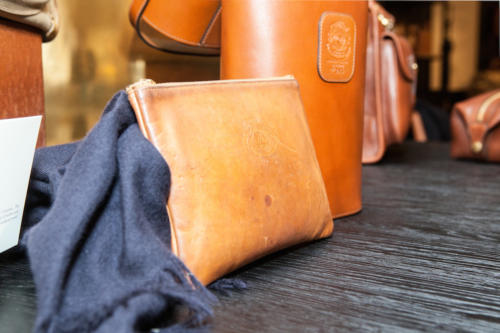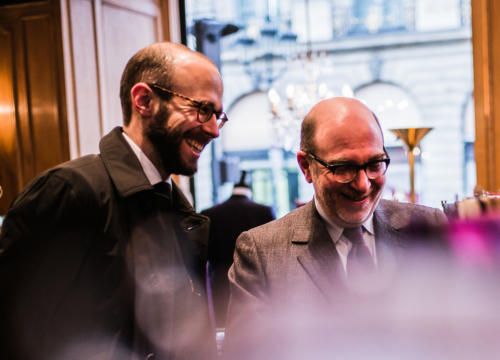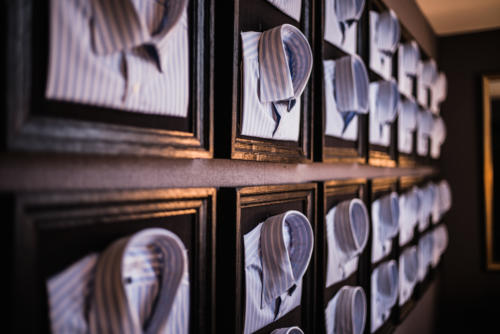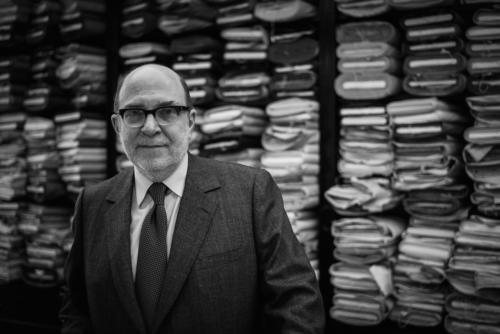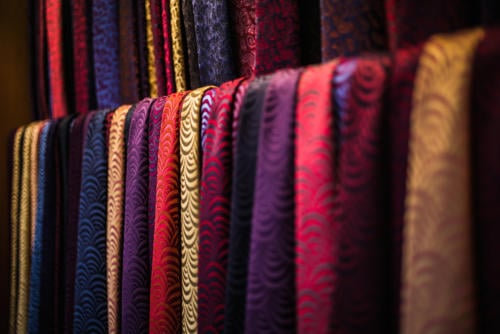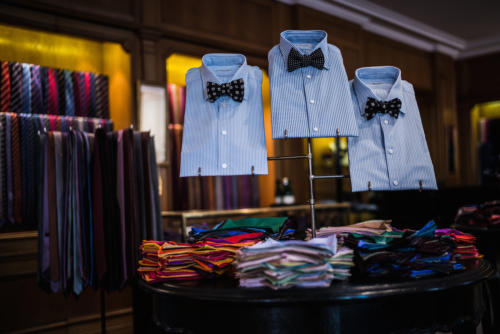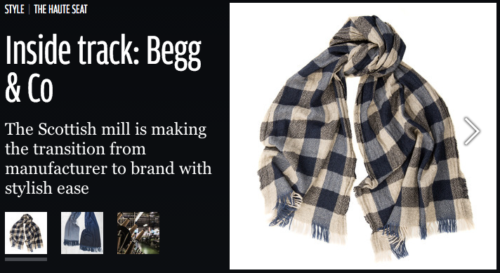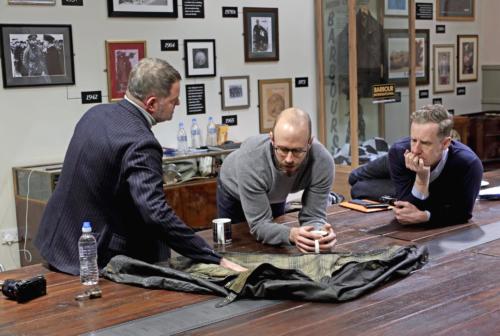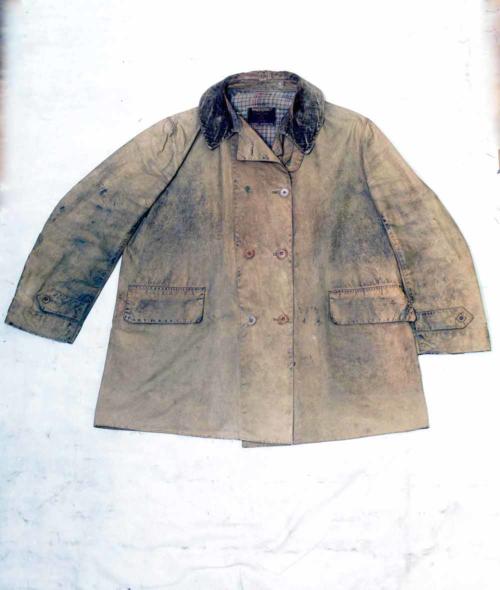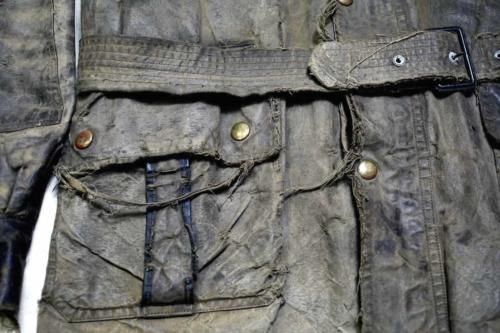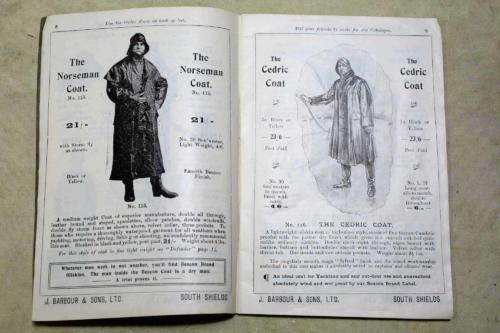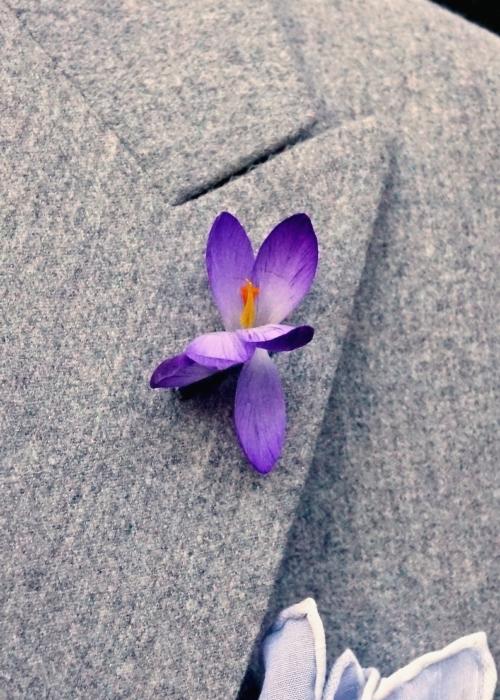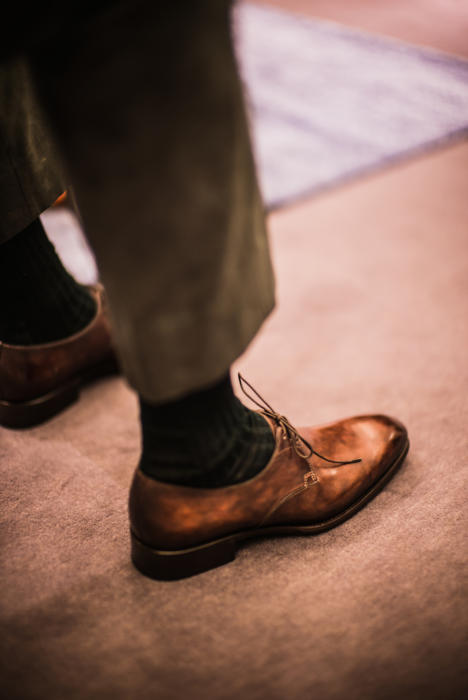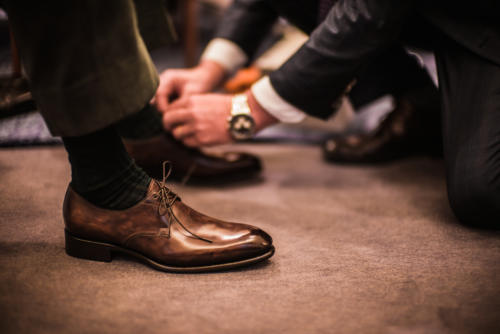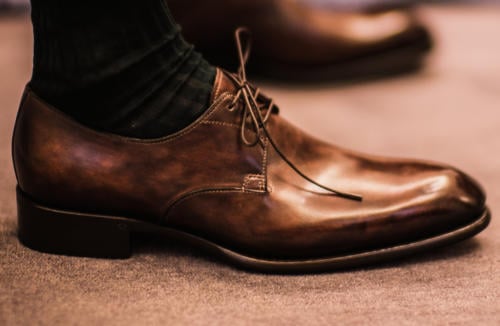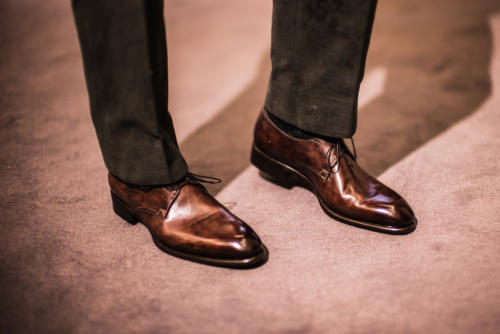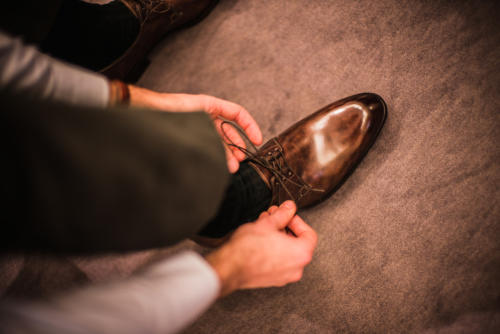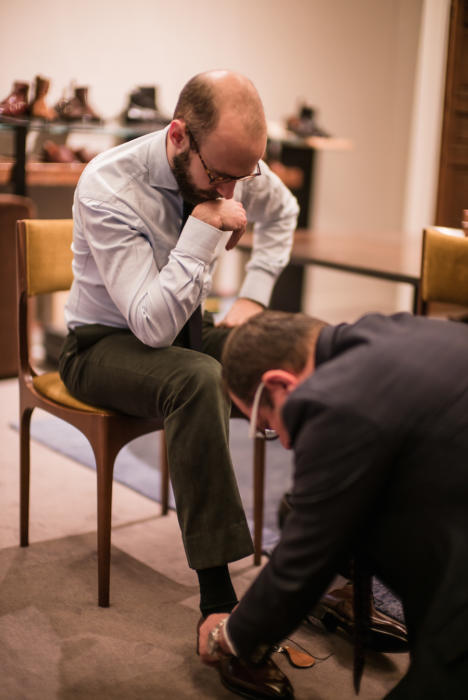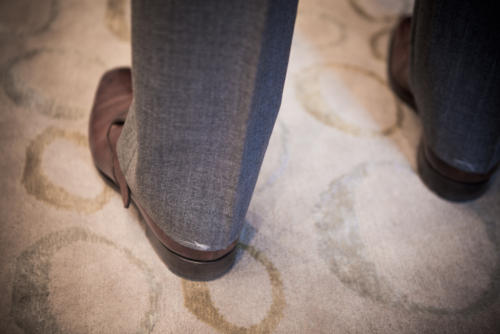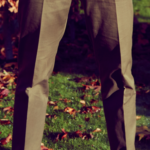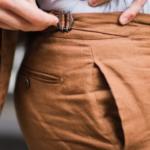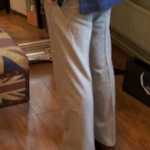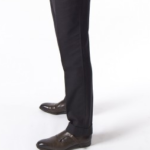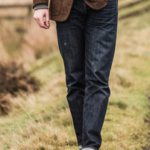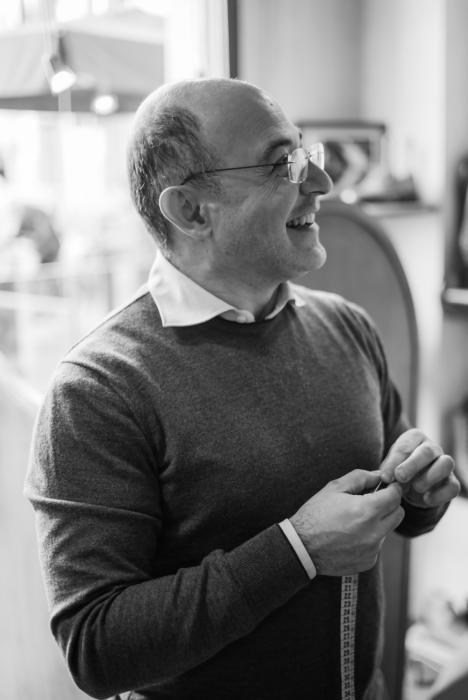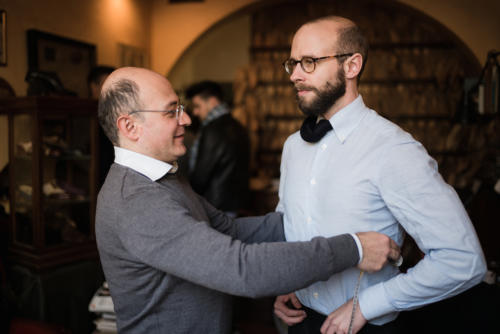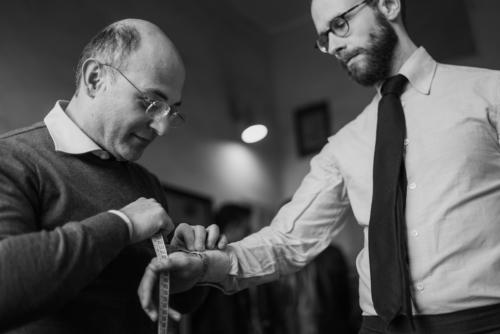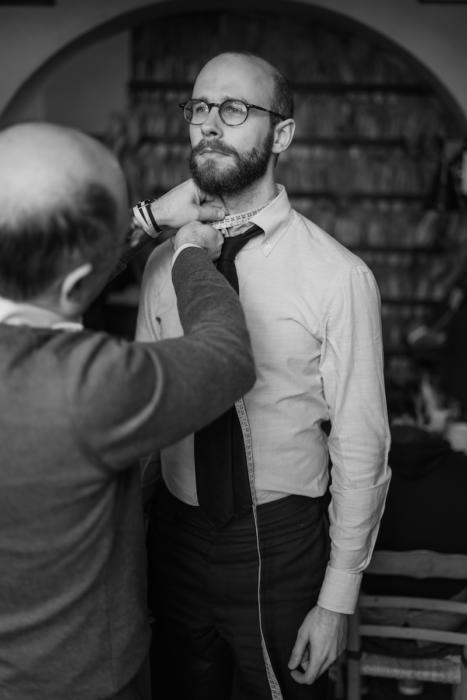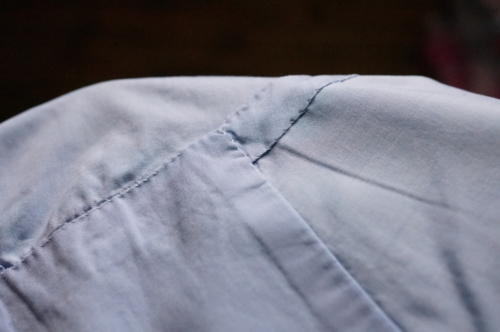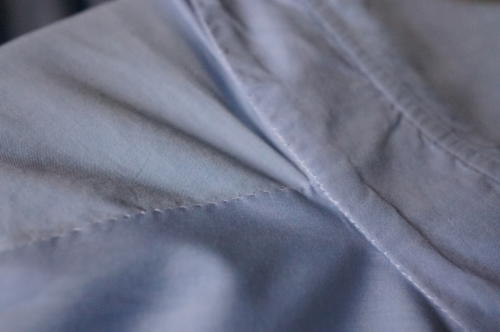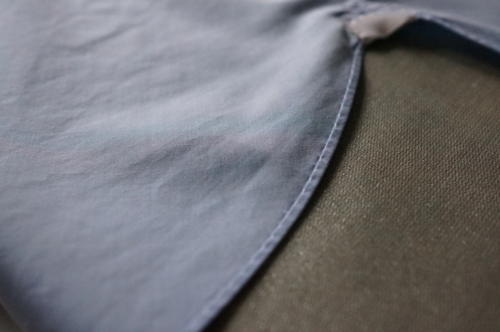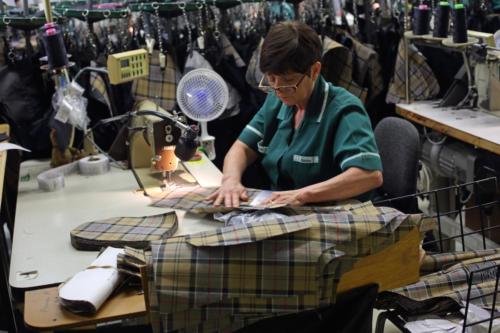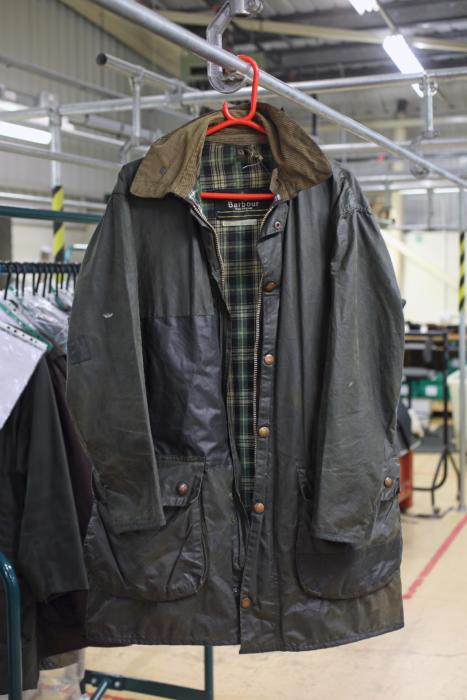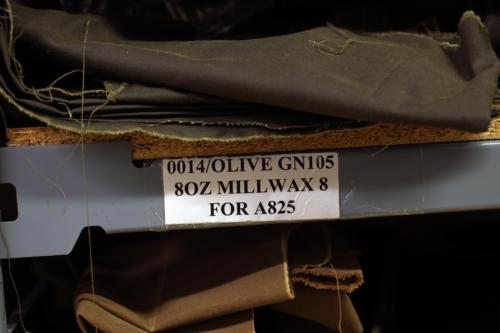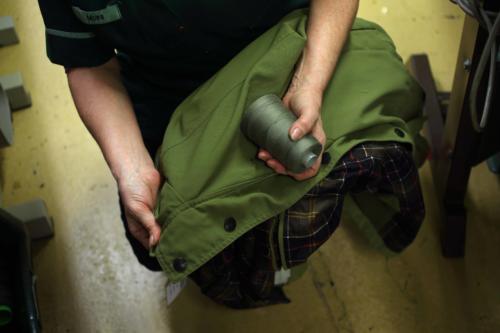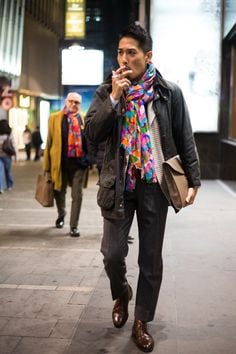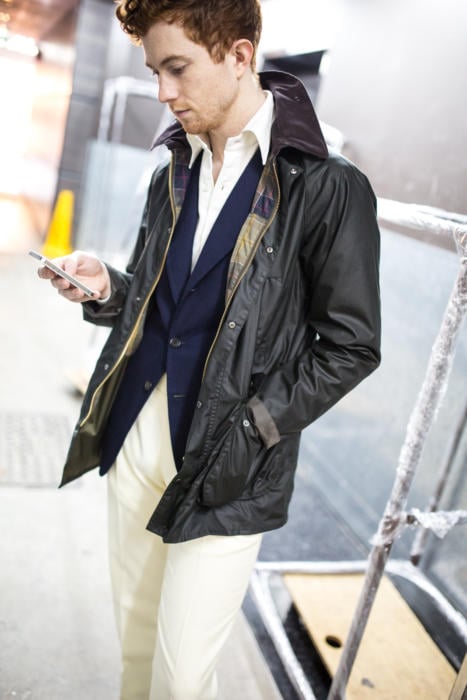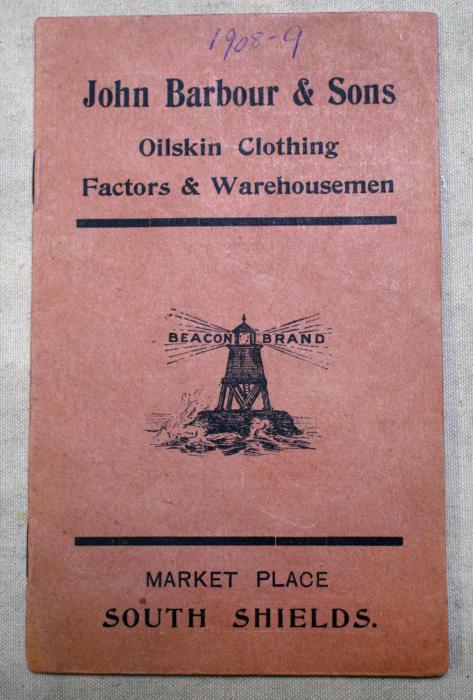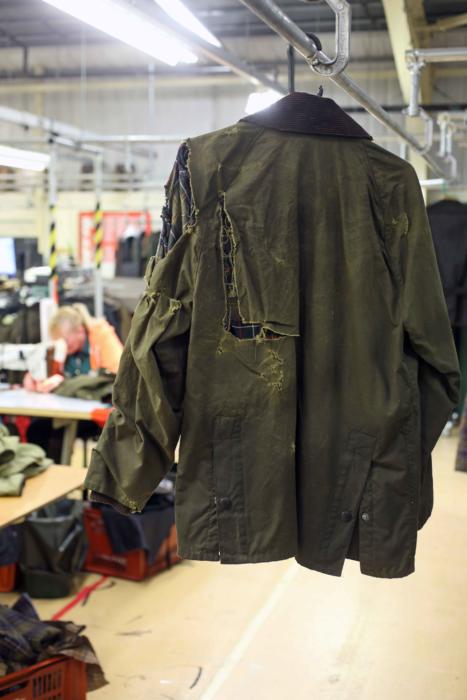
Barbour is not quite the level of craft or quality that we normally feature on Permanent Style. However, rather like US brand Filson that we covered recently, they deserve mention for the beautiful way they age and their commitment to service and repair.
Myself, photographer Horst Friedrichs and designer Toby Egelnick visited the Barbour facility in South Shields last week. It is three large buildings, a couple of minutes from the yawning mouth of the Tyne river, whose deep port was hugely popular in the nineteenth century – Barbour made its name kitting out workers, sailors and stevedores around that port.
The factory building has five production lines, where seamstresses perform all the steps it takes to make a classic waxed jacket, one after another. The first one assembles the parts of the patch pockets; she then clips the pockets onto a revolving chain, which carries them down to the next worker; she, in turn, stitches those pockets to the jacket fronts.
It was the first time I had seen a classic production line like this, and it didn’t exactly enamour me to it. But then if the aim is to produce hundreds of jackets costing £200-£300 each, some efficient mass manufacturing is required. Interestingly, there is no reason a production line should reduce quality (Huntsman used to have one, after all), but it does tend to – often because there is an emphasis on speed.
I came alive when we went through a side door into the Customer Services department – repairs, essentially. Here, some of the best and most experienced workers spend their time remaking old jackets.
When there is a rip in the wax cloth, a new panel or strip is usually added, so that it runs down to a seam. A small patch, just covering the rip itself, tends to be more fragile.
In the photo above, you can see that a black panel has been added to the waist of the jacket on one side, and another at the bottom of a pocket. There is also a small patch covering a hole in the sleeve.
The jacket is immediately even more personal than it was before – remade according to usage. Over time, you can even build up a patchwork of repairs from different points in time. Each patch is the original cloth, but of course the jacket behind it has faded and changed colour with use.
One of the biggest issues for Jean, the director of customer services, is finding and storing cloth, linings, buttons and hardware that is no longer made, in order to repair the old garments. As recently as the 1970s, the linings weren’t even uniform to the type of product, so different jackets had different lining patterns.
I feel tempted to say that a lot of love is put into repairing the jackets. Certainly if that’s true, it is driven by the love that the owners have for their Barbours. Most repair requests come with a hand-written note, explaining what is required, how it is used, and encouraging care and attention.
One jacket (top) was sent in by a woman whose dachshund (Dudley) had eaten parts of it – ripping away the back, the collar and a section of the arm. With the jacket came a photo of Dudley, sitting on a note that said: ‘I’m sorry. But the wax tasted nice!’ The jacket will be replaced rather than repaired, but Jean asked if she could keep the old one for the archive.
Repairing the jackets is not cheap. Often, it costs more than the original – which in itself is an interesting reflection of the difference in manufacturing techniques, of a production line vs one-offs. But we all appreciate the beauty of an old, much-loved garment, and waxed cotton ages as well as any. My
vintage Barbour motorcycle jacket is a good example, but actually the heavier, green, country jackets are even better.
Barbour jackets may not be luxury, but they are highly practical, can be made to last decades (with the help of the repairs service) and can be pretty stylish. Taka at
Liverano and Jake at
The Armoury (below) being pretty good examples of the latter point.
Watch out for the
SL cuts of classic jackets, which used to be just found in Asia, but are now generally available. They are usually shorter and slimmer.
Main photography: Horst Friedrichs


